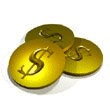 |
by Robert V. Rowe |
 |
|
March 15, 1999
|
A n awareness of the betting public’s foibles or tendencies can frequently pave the way to handicapping profits. "Handicapping" in this sense can be defined as the constant seeking of an "edge, " or means whereby one can get the jump on his or her fellow racing fan. In his never-ending pursuit of this objective (gaining an edge), your scribe decided to check specific categories of "bet down" horses. It was and is his conviction that, in horse racing, money makes the mare go ‘round. In consequence he pays close attention to which horses in any one race appear to be receiving heavier than expected play. One does not have to be particularly astute to determine this factor. Once sufficient funds have been wagered in the betting pools it is no problem to see which horses are getting relatively LATE action. The problem is to determine the type of late play that is meaningful and thus potentially profitable. An important aspect of this is to be aware that successful and popular trainers invariably get bet relatively heavily. This trend can send a false signal to the unwary. "Bet downs" from the barns of popular, highly publicized trainers frequently are not valid "hot" horses. On the other hand, when less popular trainers get extra-ordinary play it is time to pay attention. Maybe if we define these two categories numerically it would be helpful. Our "popular" group invariably is made up of a circuit’s " busiest" trainers who run lots of horses and average a success rate of 16% or more for winners. A lesser , but still competent group, will average 10 through 15% winners. We regard 20% plus as excellent; 16% to 20% as good; 10% through 15% as average, and below 10% is mediocre. Our inclination would be to ignore or pass on those conditioners who usually average 10% or less over any reasonable period of time. In the following we examined the "bet" (played down) entry records of 21 of New York’s busiest and most successful conditioners. The objective was to determine how the "live" horses that these trainers entered fared, and then compare the result with how the "lesser" lights did when their charges were bet. "Live" means those entries that obviously were bet down. Our use of the term "entries" in this context refers to individual horses and not multiple stable entries. Our No.One group consisted of trainers who consistently average 16% or higher. Our second group was composed of trainers who customarily chalk up a 10 to 15% success rate. . We tabulated a combined total of 1,277 bet and non-bet horses for Group No. One.
These figures indicate clearly that the bet downs did twice as good as the non -bets. Next month we’ll present the findings for our Group No. Two's 772 races, and compare its performance with that of Group No. One.
|

